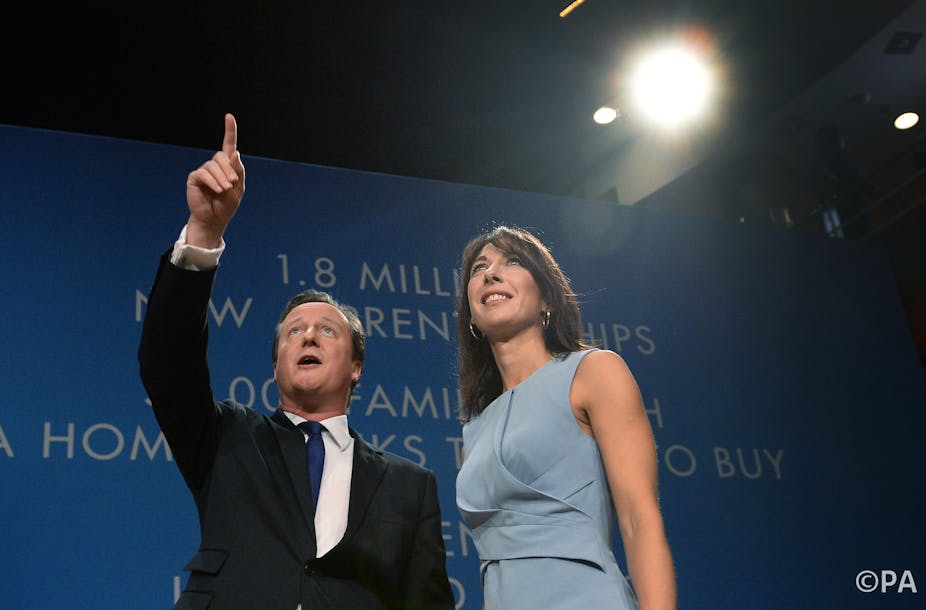In his speech to the Conservative Party conference, David Cameron promised to give voters “something for something”. And while he said he believed the savings that need to be made can be achieved through spending cuts, he also promised “tax cuts for hardworking people”.
There are deals on offer for low-wage workers if they vote Conservative and an ambitious plan for higher earners too. As is so often the case, though, it is very unclear how these measures are to be paid for. Early estimates suggest they could cost billions.
Cameron was highlighting in no uncertain terms the stark economic choices that many voters face with regards to their own incomes during his appearance in Birmingham. His first announcement to address their concerns was not a particular surprise. If the Conservative party is elected into government at the next election, it will increase the tax-free threshold from £10,500 to £12,500. This fits with a general trend for removing the lowest-paid people from taxation. Those earning minimum wage and working 30 hours a week will pay no income tax either.
But the rabbit Cameron pulled from his hat was the announcement that workers will only start to pay 40% tax on their income once they earn £50,000 or more. This is a huge shift. The threshold has been falling for a number of years, bringing more and more people into the 40% tax bracket. At the moment, earners who make £41,865 a year pay this higher rate.
It has been described as a tax on the middle classes and Cameron is evidently appealing to this group with his promise. It’s an economic policy to appeal to the core vote of middle England. And, as a move to gain momentum in the run-up to the election, it is a serious play.
It’s often the case that politicians don’t readily offer explanations for how they will afford their lofty ambitions and that is of course true here. In his speech, Cameron did not offer an estimate for how many people would be paying less tax if the scheme goes ahead but it will be a significant number. This will leave a large hole in the Treasury’s coffers.
Earlier in the week the chancellor, George Osborne, confirmed that benefits would be frozen for two years. But if a Conservative government were looking to use savings there to make up tax cuts for earners, it may well fall short. The Institute for Fiscal Studies suggests that freezing working-age benefits would only cover half the cost of increasing the tax-free threshold.
As a political move, offering major tax breaks has clearly given David Cameron momentum but economically he has left many questions unanswered. One thing is almost always true though – as one group wins, another has to lose.

